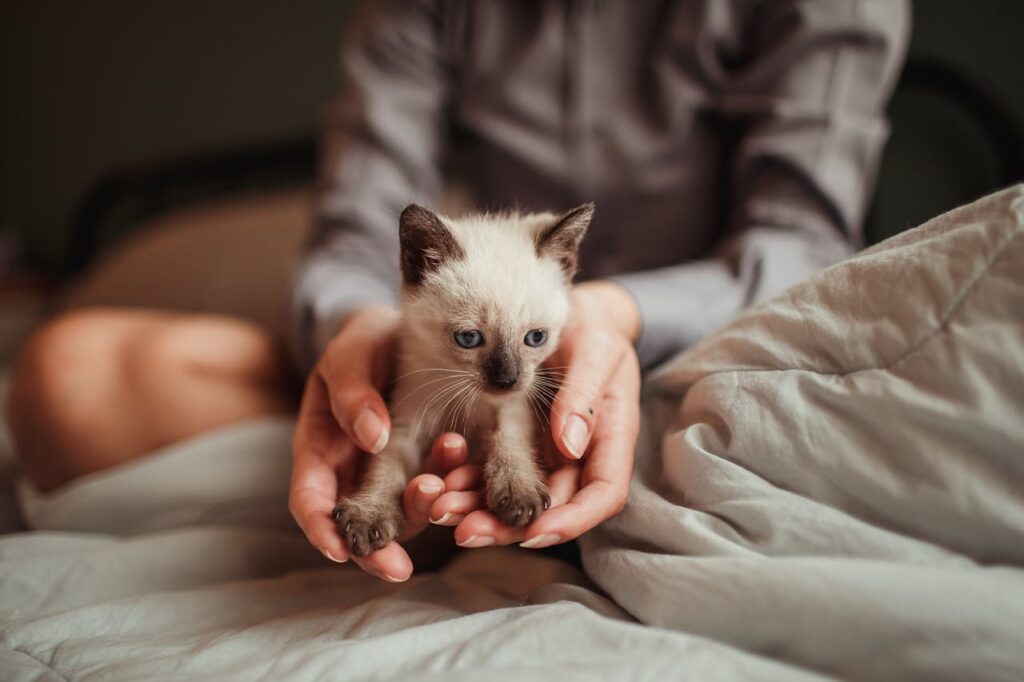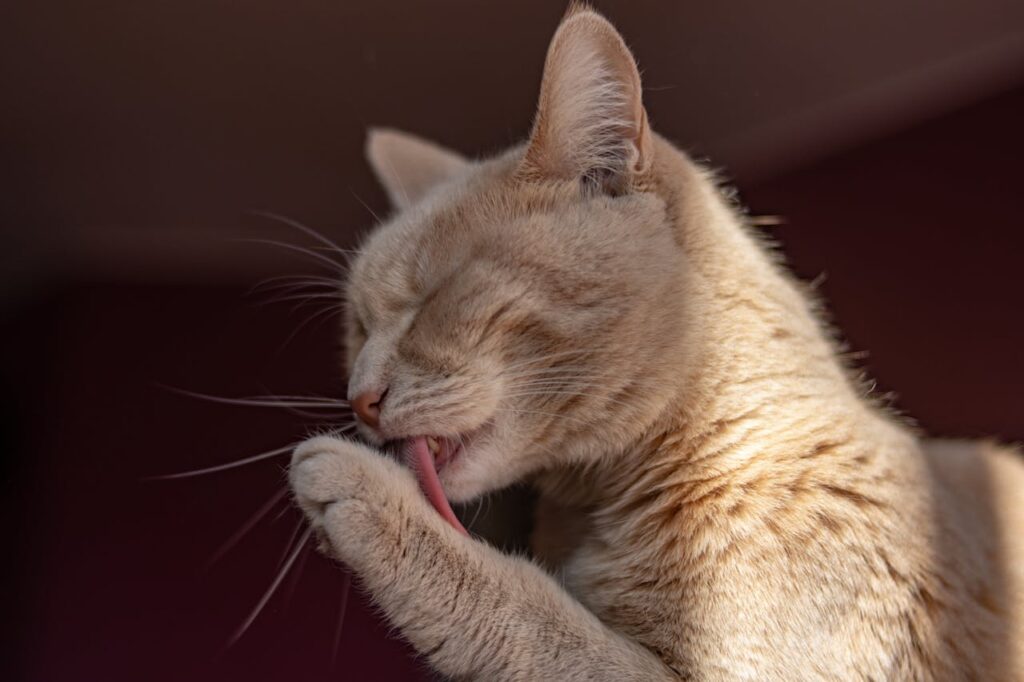What Your Cat Is Teaching You About Love, Healing, and the Science of Being Present

Have you ever come home after a long day, your mind full and your energy low, only to find your cat waiting by the door or perched on the couch? In that quiet moment, as you reach out and they blink slowly in return, something inside you shifts. The noise of the world fades, your heartbeat steadies, and your breath deepens. You might think it is just comfort or routine, but science says there is more happening beneath the surface.

Researchers have found that when we connect with our cats through gentle touch or even shared presence, our brains release oxytocin, the same hormone that helps mothers bond with their babies and partners build trust. It is proof that love is not just emotional poetry; it is chemical harmony. Every purr, every soft glance, every quiet moment together is your biology reminding you that connection is medicine for the soul.
When Stillness Speaks
Have you ever noticed how your cat seems to know when you need peace? They find their way to you, curling up beside you, not saying a word but changing everything about the room. Beneath that simple act is something extraordinary happening inside both your bodies. Science shows that these moments of shared stillness are not just emotional; they are physiological. When your cat chooses to rest against you, both of your brains begin releasing oxytocin, the hormone that fosters connection, eases stress, and brings a sense of safety. This is the same chemical that bonds parents to their children and strengthens emotional resilience in humans. It is nature’s way of saying that comfort is not imagined, it is built into your biology.
Researchers explain that when cats decide to be close without being touched or spoken to, they are engaging in a form of trust that activates pathways of calm. It mirrors what happens in human caregiving relationships, where consistent, gentle presence creates a secure bond. Over time, these small rituals become part of your brain’s memory of peace. Whether your cat curls at your feet as you work or climbs into your lap at the end of the day, these quiet exchanges shape an emotional rhythm that balances both of you. It is a reminder that love does not always arrive through grand gestures or words, but through stillness that allows two living beings to feel understood without needing to explain a thing.
The Hidden Language of Connection
There is a quiet intelligence in the way life communicates, one that goes far beyond words. Deep inside the brain, a small region called the hypothalamus produces a chemical known as oxytocin. Scientists describe it as the “bonding hormone,” but it is much more than that. It is the invisible language of connection, the biological thread that ties one heart to another. When oxytocin flows through the bloodstream, it helps the body slow down, lower blood pressure, and regulate emotion. It softens tension in the mind and replaces it with trust, empathy, and peace.

In humans, oxytocin is the reason we recognize emotion in someone’s eyes, why we feel safe when embraced, and why compassion feels like healing. Research published in Frontiers in Neuroendocrinology explains that oxytocin suppresses the stress hormone cortisol by calming the hypothalamic-pituitary-adrenal axis, the body’s main stress pathway. This hormonal shift encourages relaxation and emotional stability, reminding us that kindness and closeness are not just psychological comforts but biological necessities. In animals, the same process strengthens bonds between parent and offspring and nurtures cooperation within social groups.

When humans and cats interact through touch, shared space, or gentle vocal tones, the same pathways are activated. This shared chemistry bridges species and transforms ordinary moments into something sacred. It is the reason a cat’s quiet purr or soft presence can anchor us in stillness and teach us that safety is not something we chase but something we create together. The beauty of oxytocin lies in its simplicity. It is proof that every act of affection, no matter how small, is the body’s way of saying, “You belong here.”
The Healing Loop
Every touch tells a story, even the quiet ones. When your hand meets the soft rhythm of your cat’s fur, something happens beneath the skin that words cannot fully describe. It is more than comfort; it is conversation. With every slow stroke, the body begins to shift its chemistry, releasing oxytocin, the hormone of connection and calm. In that moment, two beings enter into an invisible exchange, where one heartbeat influences another and the air seems to fill with ease. Science calls it a feedback loop, but on a deeper level, it is the body’s way of remembering what safety feels like.

When a cat relaxes into your touch, its muscles soften, its purring deepens, and your own stress begins to melt away. Cortisol, the hormone that fuels anxiety, quietly decreases, while oxytocin continues to flow, balancing both nervous systems. Researchers studying these moments of shared calm have found that they increase heart rate variability, a marker of resilience and emotional stability. The simple act of petting, repeated over time, conditions both the cat and the human to associate touch with tranquility. It becomes a living meditation, a gentle rhythm that teaches the nervous system to rest. In that steady silence, trust is built without words. It is the purest kind of communication, one that reminds us that healing often begins in connection, not complexity.
The Mindfulness Our Cats Teach Us
In a world that constantly demands attention, cats move at their own pace. They do not rush to fill silence or force their presence into every space. They exist completely in the now, content to watch the world without needing to control it. This way of being, psychologists say, mirrors the practice of mindfulness, a state of awareness that replaces restlessness with calm observation. Cats do not plan their next move while they stretch in the sun. They simply feel the warmth, breathe, and allow the moment to unfold.

Spending time with them reminds us that peace is not something we chase but something we remember. When we watch a cat pause before leaping or sit still by a window for what feels like hours, our own rhythm begins to slow. Research in behavioral psychology shows that observing calm, predictable movements in animals can ease anxiety and quiet the brain’s stress centers. Their presence teaches us that tranquility is contagious. To learn from them is to rediscover how to breathe, how to listen, and how to live with intention. They are not just our companions; they are our quiet teachers, showing us that stillness is not empty but full of life.
The Mirror of Emotional Healing
Cats are more than quiet companions; they are reflections of our emotional world. They respond not to what we say, but to how we feel. Research on emotional contagion in animals shows that cats can perceive human mood through body language, tone, and even heart rate. When we are anxious, they often keep their distance. When we are calm, they move closer. Their sensitivity becomes a mirror, revealing our internal state without judgment.
This kind of awareness can be transformative. It invites us to become more conscious of the energy we bring into a room, to slow down before reacting, and to nurture calm from within. Studies in human-animal interaction suggest that living with a responsive pet helps regulate emotional awareness, encouraging owners to practice empathy and patience. Through their quiet behavior, cats remind us that peace begins internally and that presence heals more deeply than words ever could.
When a cat chooses to trust you, it is not a small thing. It is a reflection of the trust you have built in yourself. In that moment, their gaze becomes more than affection; it becomes a lesson in how to love gently, live mindfully, and create calm that others can feel.
The Alchemy of Connection
In the end, the story between humans and cats is not just about companionship but transformation. Every purr, every quiet glance, every shared moment of stillness is a kind of alchemy, turning the ordinary into something sacred. Science may describe it in terms of oxytocin and neural pathways, but what it really captures is how connection changes us. It softens the guarded parts of our hearts and teaches us that healing does not always come from words or achievement, but from presence.

To share your life with a cat is to practice balance between giving and allowing, between action and rest. It is to learn that peace does not need permission and that love, at its most authentic, is simply energy exchanged in trust. In their silence, cats show us how to listen to our own lives. They remind us that connection is not an escape from the world but a return to it, more open, more aware, and more human.
Loading...

